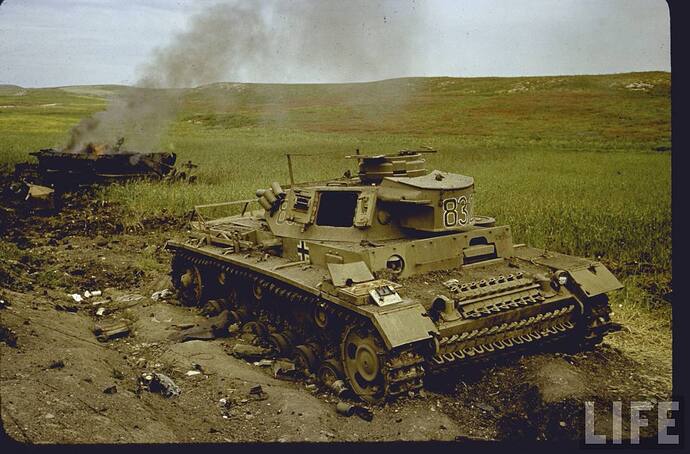Here,
Panzerbefehlswagen III
From the D variant up to the J panzer III was converted in specializated command tank. The preparation for thsi variant were made as early date as 1937, a clear indication the the germans colonels and Generals going to lead their troops from the front.
The changes included the removal of the coaxial MG 34/34s, and the adition of adiational more powerful radio equipment. The enigma machine was carried sometimes.

Lucky shot but it is possible. I read an account from an artilleryman whose M7 Priest was being strafed by a low level German plane and hit it with the 105mm main gun. The German pilot just happened to fly into the path of the shell. Incredibly lucky shot but possible none the less.
Possible but not likely.
Another image of the Commmand panzer III.

The Ausf J



Pzkpfw III in action- Bruce Culver
Panzer III varianst / W Spielberg.
3 photos of the Panzer III G with interleaved roadwheels suspension doing some test in the austrian-German border, winter 1942/43. The tank is testing an armored trolley for infantry transportation in snowy conditions.
I am not quite sure what are those atachments in the sides, in front of the turret.



This is very interesting to see whats in the German made armor, Chrome moly steel is really tough,lends itself well to rolling, and shape forging, but is a bit tricky to heat treat properly. I do agree that the alloying elements were in low proportions, and compensating by adding carbon will most likely produce brittle spots,perhaps causing uneven performance. Were the carbon any higher, it would have been more difficult to work hot(in high volume production).High amounts of carbon can allow a plate greater resistance to abrasive conditions, it may lessen somewhat the impact resistance to incoming projectiles.(Given a fairly thin section). (U.S. armor in the 70’s was 4140, or 4340, dont remember which just now, which is a chrome moly at .04% carbon. ) Hardness is a function of carbon content, and after one reaches about 1-1.3%, the metal can become no harder, but will continue to gain toughness.Thicker sections of plate, several inches, could contain greater amounts of carbon without loss of performance.If I heard correctly the description of the armor used on certain German Battleships, the carbon content may have been at, or near 2-2.5% The narrator referred to the steel as “Wooten” this may be actually “Wootz” steel, the modern name for Damascus steel. This is an ultra high carbon steel that is tough beyond the usual concept, and extremely strong, though working it can be tricky.For comaprison, a file is about 1.2% carbon, and a ball bearing about 1.5% carbon. I’m pulling this up from memory,(journeyman blacksmith tool maker) so Percentages given are approximated.
The narrator referred to the steel as “Wooten” this may be actually “Wootz” steel, the modern name for Damascus steel. This is an ultra high carbon steel that is tough beyond the usual concept, and extremely strong, though working it can be tricky.For comaprison, a file is about 1.2% carbon, and a ball bearing about 1.5% carbon. I’m pulling this up from memory,(journeyman blacksmith tool maker) so Percentages given are approximated.
Probably is “Wotan” wich was a steel brand of the Krupp firm, it was cemented steel.
I looked up “Wotan” steel, and it shares some characteristics with “Wootz” particularly in the cementite precipitation (Ferric Carbides) so Old Krupp must have figured out a way to make this great steel, or a relative of it, in quantity. Thats cool. This should not be confused with the type of steel used in making Japanese swords, or present day pattern welded steels used in knife making. That is a different material, even though it may look the same.
I looked up “Wotan” steel, and it shares some characteristics with “Wootz” particularly in the cementite precipitation (Ferric Carbides) so Old Krupp must have figured out a way to make this great steel, or a relative of it, in quantity
I BIG quantity I should say…wotan was the side armor in the battleship Bismark :shock:
I think cemented ( or face hardened) was used only sporadically in the panzers, for some aplique armor in the panzer III and IV, but most of the plates were rolled homogeneous.

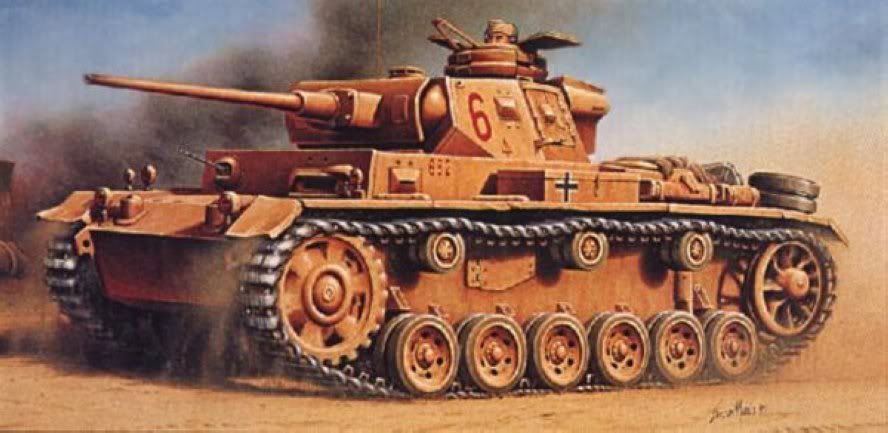
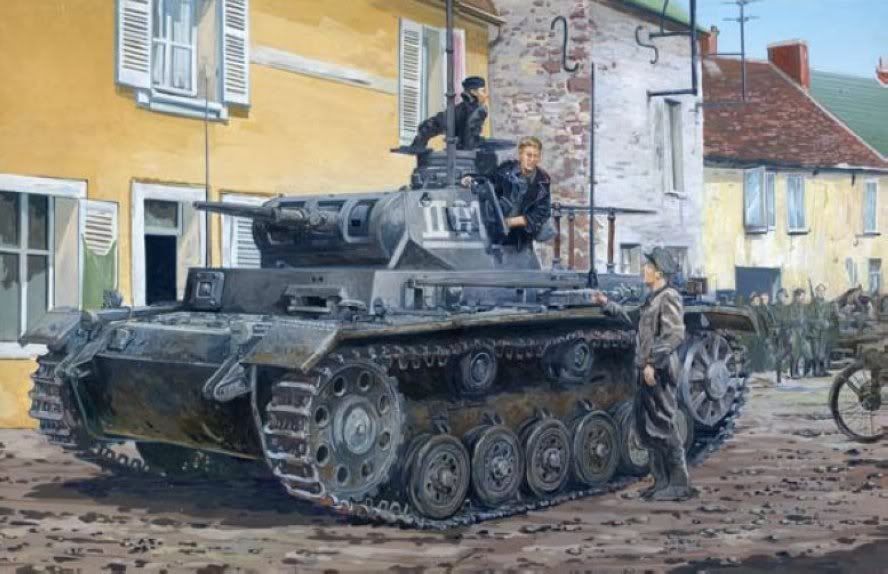

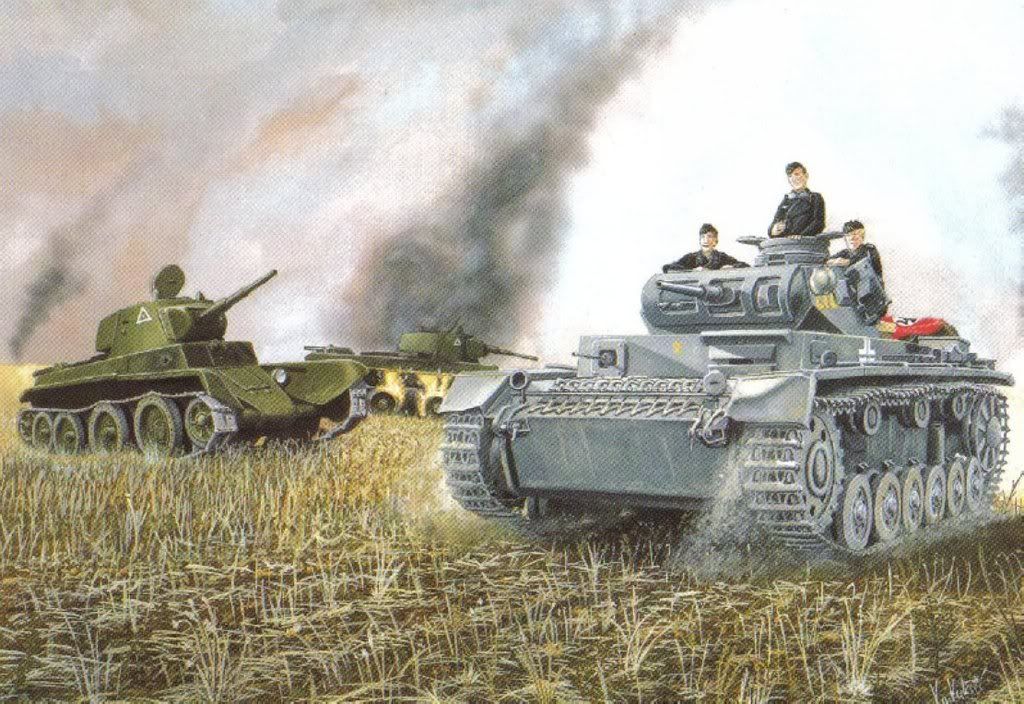
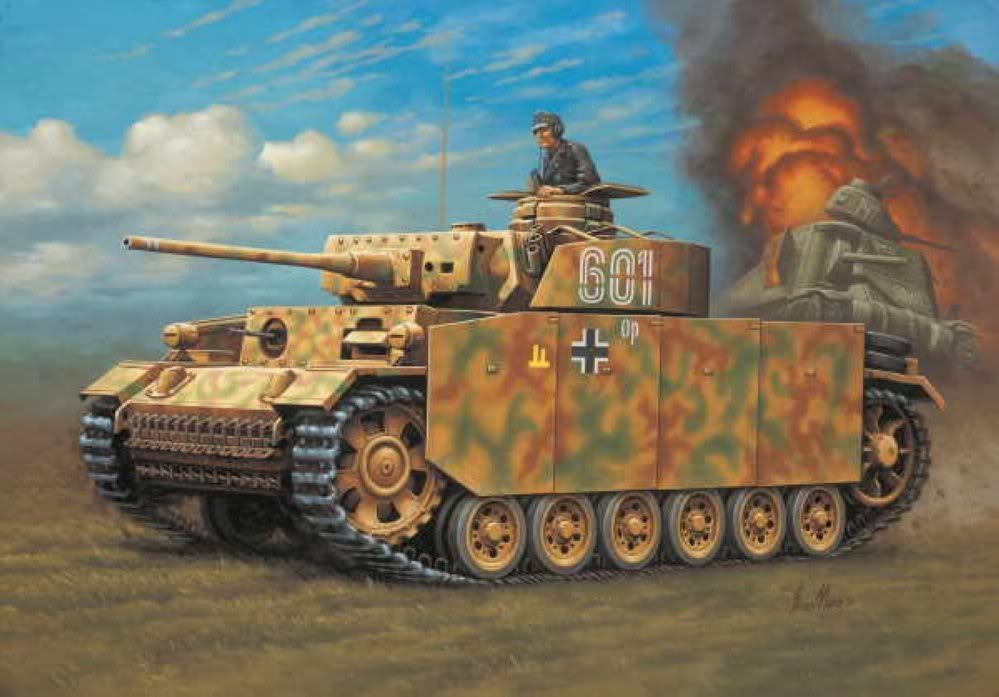

Nice pics.
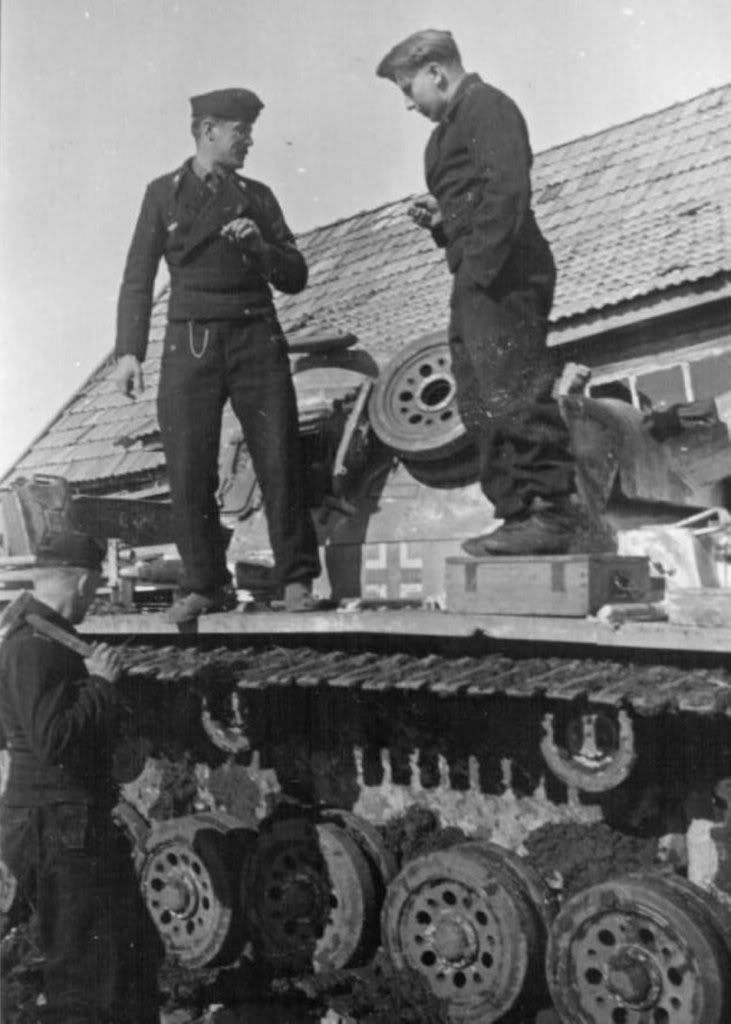
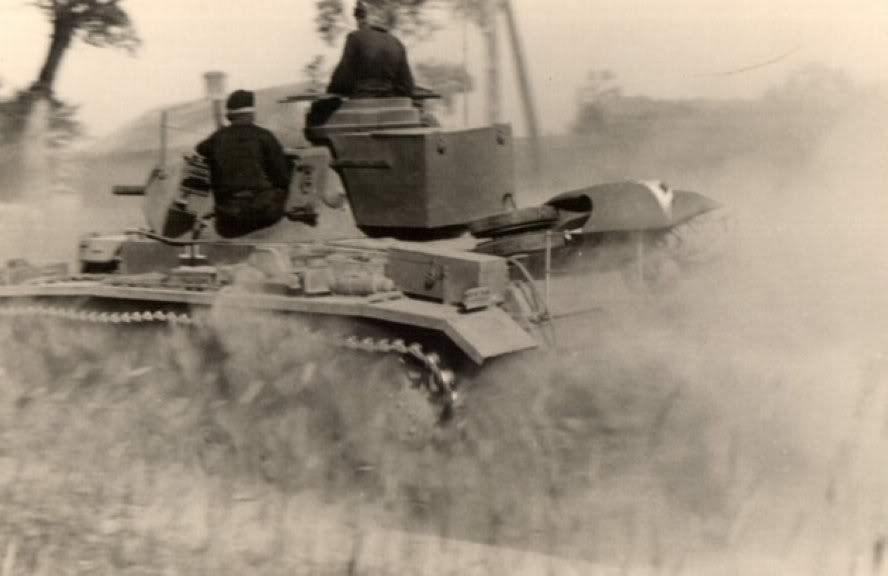
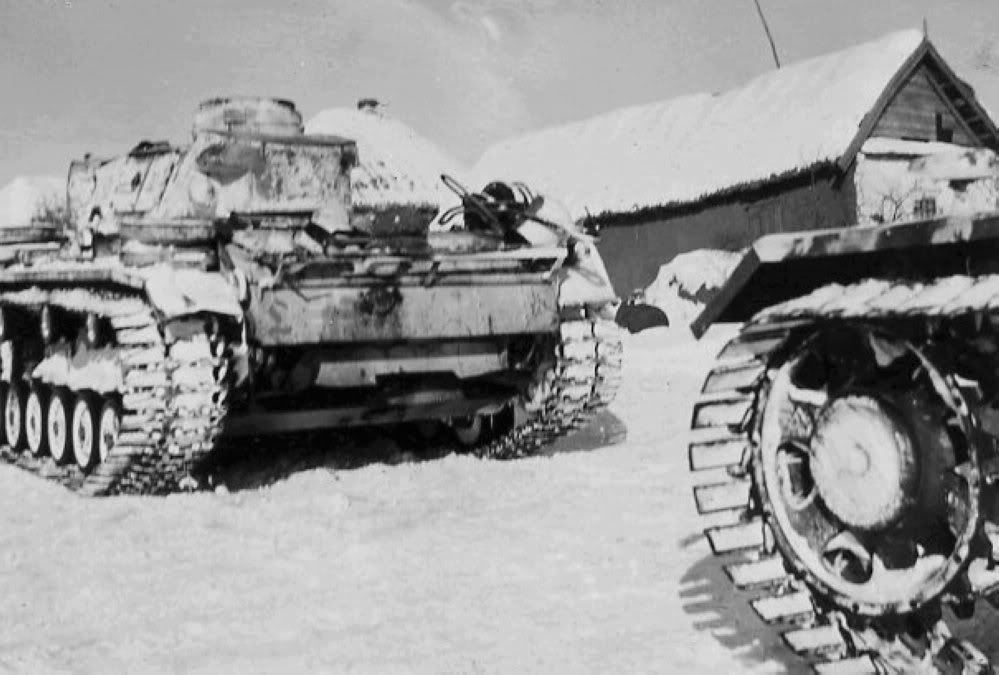
Nice, note the broad “ostketten” in the last ones.

That is a PzIV --note 8 road wheels and muffler.
PzIII E thru N have 6 road wheels; PzIII A thru L have two exhaust pipes on the outside of the back panel lower.
I’m actual surfing for the L and its muffler right now. (Is it the earlier type or later wading type? The Late L, M and N has the wading type.)
This is early PzIII muffler type (attached to an befel/beo command/radio variant --note bed frame antenna hanging poultry):

Also often no pistol ports on late L through N (retro’d down to L and J).
Pz III / Ausf. D in Afrika

The PzIII D had 8 road wheels and older cupola type (and different mantlet). That image is a PzIII N, without side schurzen (rare).
Note its late cupola type and kurz [short] 75mm gun. Also note rear turret stowage box (“Rommelkisten”). That developed around the G, produced on PzIII H. Also note no hatch on side hull in wheel bay. All PzIIIs up to Late L had a hatch there in the wheel area. Also see the first return roller is way forward. The A thru G had that back a bit.
Nice barbed wire on PzVI! Poor man’s Zimmeritt.
I just want to add to the impecable explanation by Spellir_74 this thing…the “N” was the only 75mm armed panzer III so that should be a good identification tip. Images of “real” ausf D could be seen in pages 1 and 2 of this topic.
That is an ANTANNAE DEFLECTOR…Tankist
Welcome to the site, I hope you enjoy it and we welcome contributions.
As a little note though, could you link to the actual post you are replying to as it makes it easier to keep track of what is being discussed. Either reply with quote (you can edit it if it is long or you are just replying to a single part) or just put the post number in as a reference.
Welcome Tankist, always good to have more Tankers on the Site. Posting to very old, or otherwise inactive threads makes following the conversation a bit difficult. Do use the “Reply with Quote” button (under each post, right side) As Leccy says,this will make things flow a bit better. Enjoy your visits here, lots to see!

